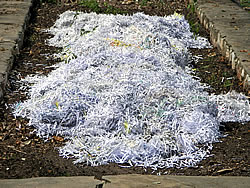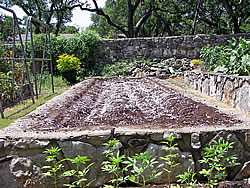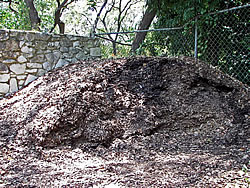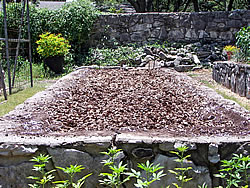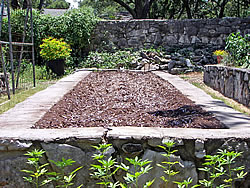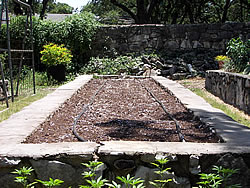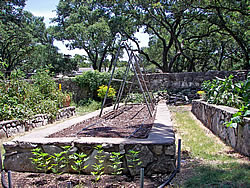Search
For The Answer
Click here to access our database of
Plant Answers
Search
For The Picture
Click here to access the Google database of plants
and insects
Information
Index
Alphabetical Listing of Topics, Recommendations
and Plants
Milberger's Nursery and Landscaping
3920 North Loop 1604 E.
San Antonio, TX 78247
210.497.3760
nursery@milbergersa.com
Open 9 to 6 Mon. through Sat.
and 10 to 5 on Sun.

Three exits east of 281, inside of 1604
Next to the Diamond Shamrock station
Please click map for more detailed map and driving directions.
Using
Shredded Paper and Tree Leaves in the Garden
We are all bombarded with unwanted junk mail and most just send it to the landfill with their garbage. Some of us get pleasure by shredding it, unread, before sending it away. I think that everyone would rather find some beneficial use for this irritant. The same holds true for those tree leaves that drop each year. Have I got a deal for you!!! Both can be incorporated directly into the soil in your vegetable garden or flower beds to provide much needed organic material without doing the composting bit. You know – that unsightly pile of rotting material that you try hide but really can’t. The following images and notes show how I use them in my vegetable garden. I collect this shredded paper in a large black plastic bag and when I get a bag full I just spread it over the surface of the bed about 2 to 4 inches deep. I then till this into the soil to a depth of about 8 inches. And, because this is non-decomposed organic material that will need a lot of nitrogen during the decomposition process, I sprinkle about 4 pounds of high nitrogen lawn fertilizer (I used 18-6-12) per 100 square feet over the bed and go over it again with the tiller. My beds are approximately 4 feet wide so I can till the entire bed quite quickly with my front tine tiller. Each year I collect leaves from the live oak trees when they drop in the early spring. Although there are about 50 of these trees on my lot their leaves are not part of my collection. Those that fall in my yard are, if in the lawn area, mowed in place and left to return their nutrients to the lawn as they decompose. Those that fall elsewhere are left to act as mulch where they fell. My neighbors are kind enough to collect their fallen leaves (often shredded by their mower) in bags which they place at the curb for pickup by the waste collection people. I make it a point to get as many as I need for the following year and bring them home with me to be shredded. Of course there is always the inevitable surprise in some of the bags, from the obvious (drink cans, garbage bag boxes, almost empty lunch bags, etc.) to the disgusting (dead small animals, rocks and other non-shred able items like children’s toys). My shredder takes a beating but most I catch in time. The pile in the above image is about one half depleted. I use these leaves just as I did the shredded paper, spreading them about 4 inches deep over the bed. I then till them and about 4 pounds of high nitrogen lawn fertilizer into the top 8 inches of the soil. For the purpose of getting pictures for this article, I did both the shredded paper and the shredded leaves the same day but normally the leaves would have been used for mulch around the vegetables during the growing season and tilled into the soil between seasons. Now I raked the bed fairly level and watered it thoroughly (I thought it was going to rain but it didn’t). This was done on June 14. As warm as the soil is, the decomposition of the paper and the leaves will take no more than 4 weeks and the bed will be ready for plants or transplants in plenty of time for my fall garden.
|





